-
 Bitcoin
Bitcoin $104,646.9490
-0.66% -
 Ethereum
Ethereum $2,613.1792
-0.44% -
 Tether USDt
Tether USDt $1.0003
-0.02% -
 XRP
XRP $2.1998
-1.62% -
 BNB
BNB $667.4407
-0.30% -
 Solana
Solana $152.5704
-2.54% -
 USDC
USDC $0.9997
-0.01% -
 Dogecoin
Dogecoin $0.1892
-3.19% -
 TRON
TRON $0.2729
1.68% -
 Cardano
Cardano $0.6764
-2.35% -
 Hyperliquid
Hyperliquid $34.9467
-4.50% -
 Sui
Sui $3.1893
-1.86% -
 Chainlink
Chainlink $13.8091
-3.21% -
 Avalanche
Avalanche $20.1505
-5.49% -
 Stellar
Stellar $0.2659
-2.44% -
 UNUS SED LEO
UNUS SED LEO $8.9436
-0.29% -
 Bitcoin Cash
Bitcoin Cash $402.0039
-0.41% -
 Toncoin
Toncoin $3.1962
-0.12% -
 Shiba Inu
Shiba Inu $0.0...01280
-2.13% -
 Hedera
Hedera $0.1672
-2.93% -
 Litecoin
Litecoin $87.8871
-2.52% -
 Polkadot
Polkadot $4.0330
-3.68% -
 Monero
Monero $318.5390
-8.18% -
 Ethena USDe
Ethena USDe $1.0010
-0.04% -
 Bitget Token
Bitget Token $4.7261
-1.63% -
 Dai
Dai $0.9998
-0.01% -
 Pepe
Pepe $0.0...01178
-5.18% -
 Pi
Pi $0.6483
-0.47% -
 Aave
Aave $265.2447
0.27% -
 Uniswap
Uniswap $6.3369
-5.70%
How does the cryptocurrency market work?
Cryptocurrency markets, decentralized & peer-to-peer, see prices driven by supply/demand, influenced by news and regulation. Trading occurs on various exchanges, with diverse participants including miners, investors, and developers, necessitating blockchain & economic knowledge.
Mar 13, 2025 at 12:45 pm
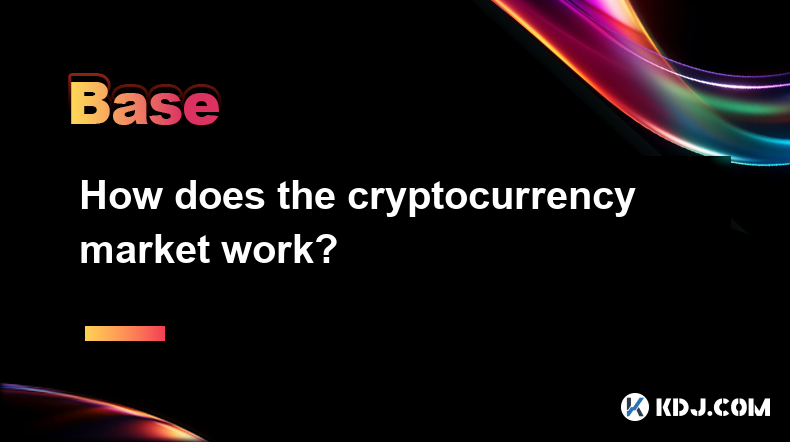
Key Points:
- The cryptocurrency market operates on a decentralized, peer-to-peer basis, unlike traditional financial markets.
- Price discovery is driven by supply and demand, influenced by factors like news, adoption, regulation, and technological advancements.
- Trading occurs on various exchanges, each with its own fees, security measures, and trading pairs.
- Market participants include miners, investors, traders, developers, and businesses.
- Understanding market mechanics requires knowledge of blockchain technology, cryptography, and economic principles.
How Does the Cryptocurrency Market Work?
The cryptocurrency market functions differently from traditional stock or forex markets. Instead of a central authority like a bank or government regulating transactions, it relies on a decentralized, peer-to-peer network secured by blockchain technology. This means transactions are verified and recorded across many computers, making manipulation significantly harder.
Price discovery in the cryptocurrency market is a dynamic process. Unlike traditional assets with established valuation methods, cryptocurrency prices are driven purely by supply and demand. Factors influencing demand include positive news coverage, increased adoption by businesses, favorable regulatory developments, and technological improvements. Conversely, negative news, regulatory crackdowns, or security breaches can suppress demand.
Trading cryptocurrencies happens on various exchanges, each operating with its unique features. These exchanges act as marketplaces connecting buyers and sellers. Exchanges differ in terms of fees charged per transaction, the level of security they offer, and the specific cryptocurrencies they support (trading pairs). Choosing the right exchange depends on individual needs and priorities, considering factors such as security, fees, and the availability of desired cryptocurrencies.
Several key players participate in the cryptocurrency market. Miners are crucial, validating transactions and adding new blocks to the blockchain in exchange for newly minted cryptocurrencies. Investors seek long-term appreciation in value, while traders aim for short-term profits by exploiting price fluctuations. Developers build and maintain the underlying blockchain technology, while businesses are increasingly integrating cryptocurrencies into their operations. Each group plays a vital role in shaping the market's dynamics.
Understanding the Underlying Technology
At the heart of the cryptocurrency market lies blockchain technology. A blockchain is a distributed, immutable ledger recording all transactions. Its decentralized nature ensures transparency and security, preventing fraudulent activities. Cryptography secures the network, protecting transactions and user identities. Understanding these technological foundations is essential to grasping how the cryptocurrency market functions.
The market's operation is further influenced by economic principles like supply and demand. Limited supply of certain cryptocurrencies, combined with increasing demand, can drive prices upwards. Conversely, an oversupply or reduced demand can lead to price declines. Market sentiment, influenced by news and speculation, also significantly impacts price volatility.
The process of buying and selling cryptocurrencies involves several steps:
- Choose an exchange: Select a reputable exchange that supports the cryptocurrency you want to trade.
- Create an account: Register an account on the chosen exchange, providing necessary identification and security information.
- Deposit funds: Transfer funds into your exchange account, typically using fiat currency or another cryptocurrency.
- Place an order: Specify the cryptocurrency you want to buy or sell, the amount, and the price you are willing to pay or receive.
- Execute the trade: Once your order matches with another user's order, the trade is executed.
- Manage your holdings: Monitor your cryptocurrency holdings and adjust your portfolio based on market conditions.
Market Volatility and Risk
The cryptocurrency market is notorious for its high volatility. Prices can fluctuate dramatically in short periods, presenting both significant opportunities and substantial risks. Understanding these risks is crucial before participating in the market. Factors contributing to volatility include news events, regulatory announcements, technological developments, and market sentiment.
Due to its relatively young age and lack of comprehensive regulation in many jurisdictions, the cryptocurrency market is inherently risky. The value of cryptocurrencies can plummet rapidly, leading to significant financial losses. Investors should only invest what they can afford to lose and conduct thorough research before making any investment decisions. Diversification across different cryptocurrencies can help mitigate risk, but it does not eliminate it entirely.
Frequently Asked Questions:
Q: Is the cryptocurrency market regulated? A: Regulation varies significantly across jurisdictions. Some countries have established regulatory frameworks for cryptocurrencies, while others have yet to implement comprehensive rules. The lack of uniform global regulation contributes to the market's volatility and risk.
Q: How are cryptocurrency prices determined? A: Cryptocurrency prices are determined by supply and demand, influenced by factors such as news, adoption, regulatory developments, and technological advancements. There's no central authority setting prices.
Q: What are the risks of investing in cryptocurrencies? A: Investing in cryptocurrencies carries significant risks, including high volatility, potential for scams, security breaches, and regulatory uncertainty. Losses can be substantial.
Q: How can I buy cryptocurrencies? A: Cryptocurrencies are typically bought and sold through cryptocurrency exchanges. You need to create an account, deposit funds, and place an order to buy the desired cryptocurrency.
Q: What is blockchain technology? A: Blockchain is a decentralized, distributed ledger technology that records transactions in a secure and transparent manner. It is the foundation of most cryptocurrencies.
Q: What is mining? A: Mining is the process of verifying and adding new blocks of transactions to the blockchain. Miners are rewarded with newly minted cryptocurrencies for their work.
Q: What are the different types of cryptocurrencies? A: There are thousands of cryptocurrencies, each with its unique features and purposes. Bitcoin and Ethereum are the most well-known examples, but many others exist, each with varying market capitalizations and functionalities.
Disclaimer:info@kdj.com
The information provided is not trading advice. kdj.com does not assume any responsibility for any investments made based on the information provided in this article. Cryptocurrencies are highly volatile and it is highly recommended that you invest with caution after thorough research!
If you believe that the content used on this website infringes your copyright, please contact us immediately (info@kdj.com) and we will delete it promptly.
- Curve Finance Warns Users of DNS Hijacking Targeting Its Official Domain
- 2025-06-05 14:10:16
- Pump.fun launches a new reward program for creators, sharing 5 basis points (0.05%) of revenue in SOL with each transaction
- 2025-06-05 14:10:16
- ARK Invest CEO Cathie Wood Applauded Coinbase Global Inc. COIN on Its Inclusion in the S&P 500 Index
- 2025-06-05 14:05:16
- Bullish partners with the Gibraltar Government and GFSC to pioneer world's first crypto clearing regulation
- 2025-06-05 14:05:16
- Ripple's Settlement with the SEC Could Trigger an XRP Price Surge, and Shine a Spotlight on Rising Cross-Border Payment Tokens
- 2025-06-05 14:00:28
- XRP Price Broke Higher and Cleared the $2.150 Resistance Zone
- 2025-06-05 14:00:28
Related knowledge
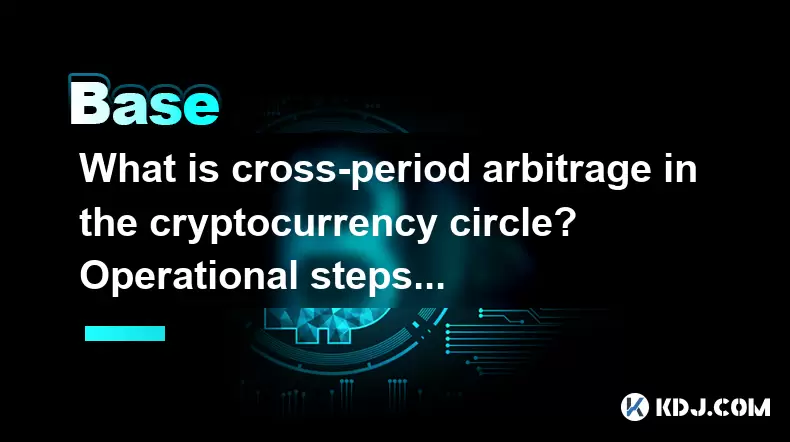
What is cross-period arbitrage in the cryptocurrency circle? Operational steps for cross-period arbitrage
May 29,2025 at 01:14am
What is Cross-Period Arbitrage in the Cryptocurrency Circle? Cross-period arbitrage in the cryptocurrency circle refers to the practice of exploiting price differences of the same asset across different time periods. This strategy involves buying an asset at a lower price in one period and selling it at a higher price in another period. The concept is r...

What is grid trading in the cryptocurrency circle? Analysis of the advantages and disadvantages of grid strategies
May 28,2025 at 03:07pm
Grid trading in the cryptocurrency circle refers to an automated trading strategy where a trader sets up a series of buy and sell orders at predetermined price levels. This creates a 'grid' of orders that automatically execute as the market price moves within the defined range. The primary goal of grid trading is to profit from the market's volatility b...
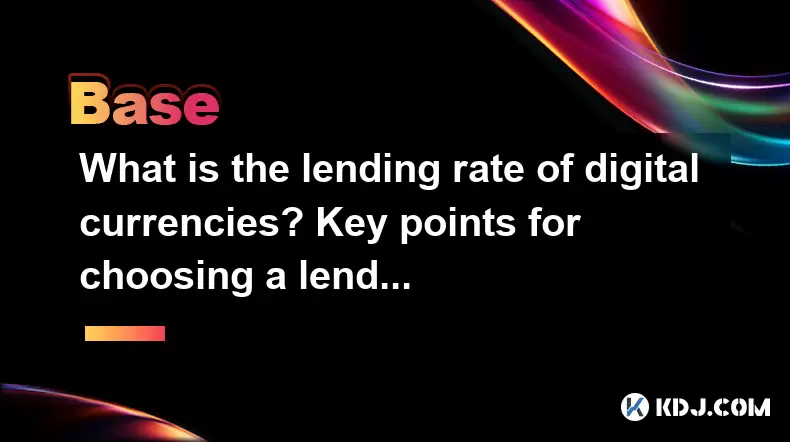
What is the lending rate of digital currencies? Key points for choosing a lending platform
Jun 02,2025 at 03:56pm
The concept of lending rates in the context of digital currencies is an integral part of the broader cryptocurrency ecosystem. Lending rates refer to the interest rates that borrowers pay to lenders when they borrow digital currencies. These rates can vary widely based on several factors including the platform used, the type of cryptocurrency being lent...
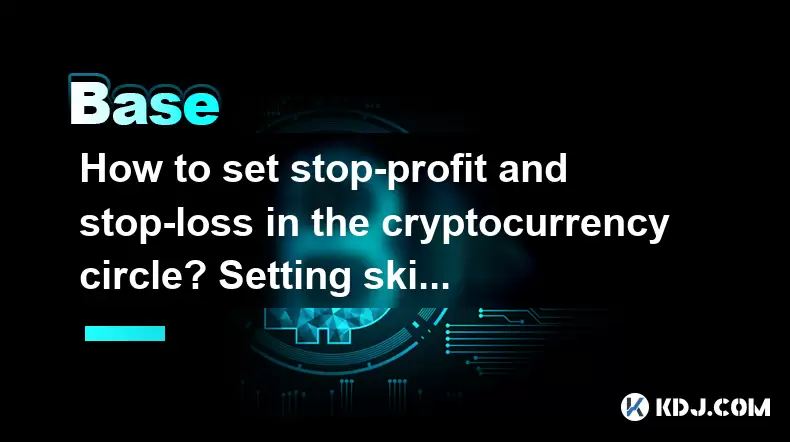
How to set stop-profit and stop-loss in the cryptocurrency circle? Setting skills and common misunderstandings
May 28,2025 at 11:28am
Setting stop-profit and stop-loss orders is a crucial strategy for managing risk and maximizing returns in the volatile world of cryptocurrencies. These tools help traders secure profits and limit losses by automatically executing trades when certain price levels are reached. However, understanding how to set these orders effectively and avoiding common...
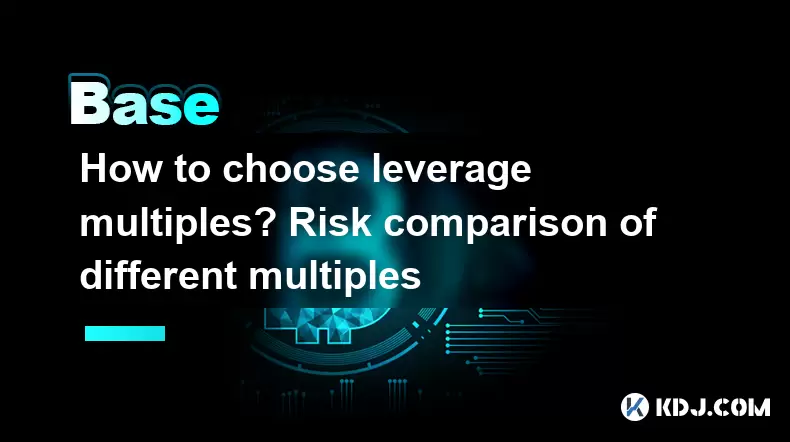
How to choose leverage multiples? Risk comparison of different multiples
May 30,2025 at 09:15am
Choosing the right leverage multiple is a critical decision for any cryptocurrency trader. Leverage can amplify both gains and losses, making it essential to understand the risks and benefits associated with different multiples. Leverage, in the context of cryptocurrency trading, refers to borrowing funds to increase the potential return on an investmen...
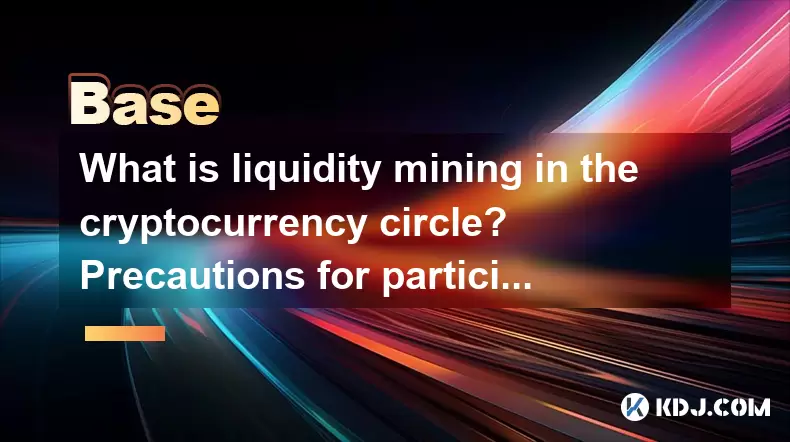
What is liquidity mining in the cryptocurrency circle? Precautions for participating in mining
May 29,2025 at 01:56am
Liquidity mining has become a buzzword within the cryptocurrency circle, attracting numerous enthusiasts and investors looking to leverage this opportunity. Liquidity mining refers to the process where users provide liquidity to a decentralized exchange (DEX) or a lending protocol and, in return, receive rewards, often in the form of the platform's nati...

What is cross-period arbitrage in the cryptocurrency circle? Operational steps for cross-period arbitrage
May 29,2025 at 01:14am
What is Cross-Period Arbitrage in the Cryptocurrency Circle? Cross-period arbitrage in the cryptocurrency circle refers to the practice of exploiting price differences of the same asset across different time periods. This strategy involves buying an asset at a lower price in one period and selling it at a higher price in another period. The concept is r...

What is grid trading in the cryptocurrency circle? Analysis of the advantages and disadvantages of grid strategies
May 28,2025 at 03:07pm
Grid trading in the cryptocurrency circle refers to an automated trading strategy where a trader sets up a series of buy and sell orders at predetermined price levels. This creates a 'grid' of orders that automatically execute as the market price moves within the defined range. The primary goal of grid trading is to profit from the market's volatility b...

What is the lending rate of digital currencies? Key points for choosing a lending platform
Jun 02,2025 at 03:56pm
The concept of lending rates in the context of digital currencies is an integral part of the broader cryptocurrency ecosystem. Lending rates refer to the interest rates that borrowers pay to lenders when they borrow digital currencies. These rates can vary widely based on several factors including the platform used, the type of cryptocurrency being lent...

How to set stop-profit and stop-loss in the cryptocurrency circle? Setting skills and common misunderstandings
May 28,2025 at 11:28am
Setting stop-profit and stop-loss orders is a crucial strategy for managing risk and maximizing returns in the volatile world of cryptocurrencies. These tools help traders secure profits and limit losses by automatically executing trades when certain price levels are reached. However, understanding how to set these orders effectively and avoiding common...

How to choose leverage multiples? Risk comparison of different multiples
May 30,2025 at 09:15am
Choosing the right leverage multiple is a critical decision for any cryptocurrency trader. Leverage can amplify both gains and losses, making it essential to understand the risks and benefits associated with different multiples. Leverage, in the context of cryptocurrency trading, refers to borrowing funds to increase the potential return on an investmen...

What is liquidity mining in the cryptocurrency circle? Precautions for participating in mining
May 29,2025 at 01:56am
Liquidity mining has become a buzzword within the cryptocurrency circle, attracting numerous enthusiasts and investors looking to leverage this opportunity. Liquidity mining refers to the process where users provide liquidity to a decentralized exchange (DEX) or a lending protocol and, in return, receive rewards, often in the form of the platform's nati...
See all articles
























![HOW TO WITHDRAW WORLD COIN TO BINANCE / OKX USING WORLD CHAIN! (EASY GUIDE) [2025] HOW TO WITHDRAW WORLD COIN TO BINANCE / OKX USING WORLD CHAIN! (EASY GUIDE) [2025]](/uploads/2025/06/05/cryptocurrencies-news/videos/withdraw-coin-binance-okx-chain-easy-guide/684132dbc5c4d_image_500_375.webp)






























































